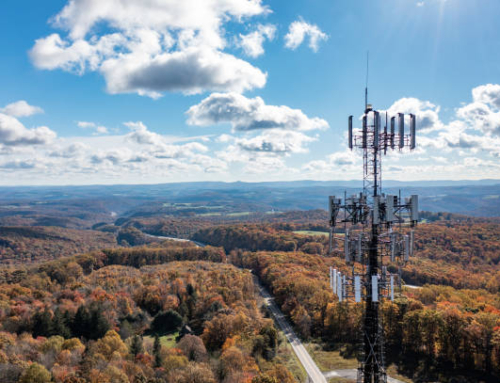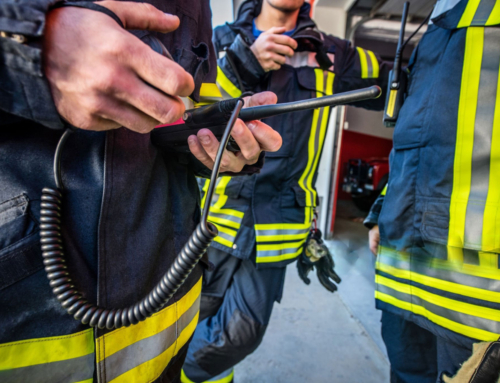Artificial intelligence is rapidly transforming healthcare—from how patients are diagnosed to how hospitals operate behind the scenes. What once felt like science fiction is now being implemented in real time: AI reads medical images, predicts patient deterioration, streamlines workflows, and enables virtual assistants that reduce clinician burnout.
But all of this innovation hinges on a critical, often overlooked factor: connectivity.
What AI Is Doing in Healthcare Today
Across the country, hospitals and healthcare systems are already using AI in a variety of ways:
- Diagnostic Imaging: AI can detect cancer, stroke, or heart conditions in scans faster and often with greater accuracy than a radiologist.
- Virtual Health Assistants: Patients are increasingly interacting with AI-powered bots for triage, appointment scheduling, and medication reminders.
- Predictive Analytics: AI systems analyze real-time vitals, EHR data, and historical trends to warn clinicians before adverse events occur.
- Operational Efficiency: From bed management to supply chain forecasting, AI reduces costs and improves resource allocation.
Each of these applications depends on secure, low-latency, high-bandwidth communication across the hospital’s digital ecosystem. That’s where Repeated Signal Solutions (RSS) plays a key role.
The Future: Predictive Care and Real-Time Intelligence
Looking ahead, AI will become less reactive and more predictive—enabling healthcare providers to act before a condition worsens or a complication arises.
Tomorrow’s AI will power:
- Personalized Medicine: Using genomic data, lifestyle insights, and real-time vitals to tailor treatment on a per-patient level.
- Digital Twins of Hospitals: Creating real-time simulations of patient flow, bed usage, and clinical processes to improve outcomes.
- AI-Powered Robotics: Enabling surgical precision and automation enhanced by 5G-powered real-time data.
- Local AI Training Models: Allowing hospitals to build and refine AI tools based on their own patient populations and protocols.
But these advanced applications require an equally advanced network—one that’s built for performance, reliability, and security.
Where Repeated Signal Solutions Fits In
5G-Ready Distributed Antenna Systems (DAS)
AI-driven tools—especially those used in mobile environments—require strong, uninterrupted cellular coverage. Doctors and nurses moving through large medical campuses can’t afford signal dead zones when pulling up AI-driven diagnostics or communicating critical patient updates.
RSS designs and installs carrier-approved DAS systems that ensure consistent, high-quality 4G/5G cellular service in every corner of the facility—elevators, radiology suites, lower levels, and thick-walled surgical wings. This type of connectivity supports:
- Real-time access to cloud-based AI tools
- Mobile clinical applications with embedded AI
- AI-powered asset tracking (IV pumps, wheelchairs, etc.)
- Secure communication between emergency teams
Wi-Fi 7 Infrastructure for AI-Driven Workloads
As AI applications become more bandwidth-intensive—handling large imaging files, supporting telepresence robotics, and analyzing data in real time—the wireless network must evolve too.
RSS deploys Wi-Fi 7 solutions engineered for next-generation healthcare workloads. This includes:
- Multi-Gigabit Throughput: Ideal for AI-enhanced radiology, telehealth, and surgical visualization tools.
- Low Latency: Crucial for real-time AI decision-making in operating rooms or emergency departments.
- Intelligent QoS (Quality of Service): Ensures mission-critical AI applications take priority, even during peak network loads.
- Reduced Interference: Allows for denser device deployment in environments with wearables, IoT sensors, and smart medical devices.
Our designs use Ekahau wireless modeling software to ensure optimal AP placement, capacity planning, and future scalability.
Private 5G Networks for Secure, Intelligent Care
Hospitals are increasingly deploying Private 5G to enable AI workflows that require high reliability, ultra-low latency, and enhanced data isolation. These networks are especially valuable for:
- Surgical Robotics with AI-assisted motion control
- Real-Time Patient Monitoring where consistent bandwidth and security are non-negotiable
- Smart Beds and Connected Rooms integrated with AI to monitor movement, vitals, and falls
- On-Prem AI Training Models that require dedicated throughput and edge compute resources
RSS designs private LTE and 5G networks customized to each healthcare environment. Whether it’s an academic medical center or a specialty hospital, we build solutions that integrate with existing infrastructure, meet HIPAA compliance, and support scalable AI use cases.
Fiber and Backbone Planning for the AI-Driven Future
None of this works without the right physical foundation. As AI evolves, the demands on your core network will only grow.
RSS leads the design and coordination of:
- Fiber and Cabling Infrastructure: Scalable, low-latency fiber routes that support both wireless access points and AI compute/storage nodes.
- Redundant ISP Connectivity: Ensuring AI systems dependent on cloud or remote services don’t go offline in the event of an outage.
- Network Segmentation for AI Devices: Secure logical separation for connected imaging equipment, AI diagnostic servers, and hospital IT systems.
We use tools like iBwave for modeling DAS and Private 5G systems and work alongside your design teams, IT staff, and architects to ensure the infrastructure supports current demands and future expansion.
Why This Matters
AI in healthcare isn’t some future concept—it’s happening now, and it’s accelerating fast. But these tools can only be as effective as the networks they run on.
At Repeated Signal Solutions, we don’t just install wireless infrastructure—we help build the connectivity backbone for healthcare innovation. From 5G-ready DAS to Wi-Fi 7 and private 5G networks, we ensure your healthcare facility is prepared not just for today’s AI—but for what’s coming next.






